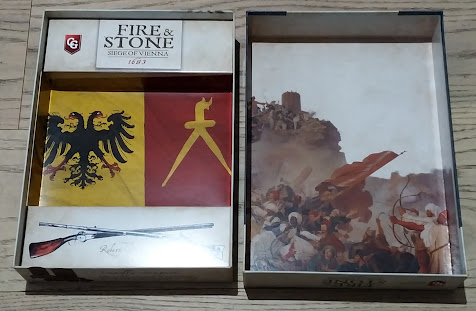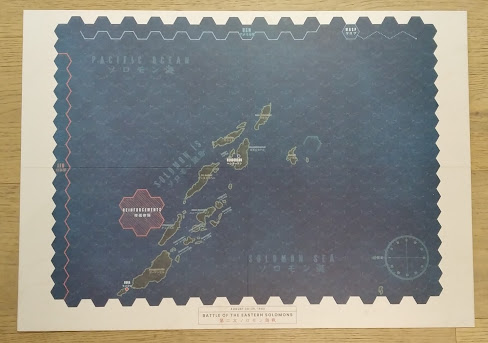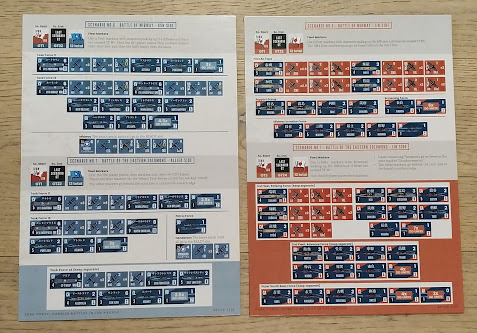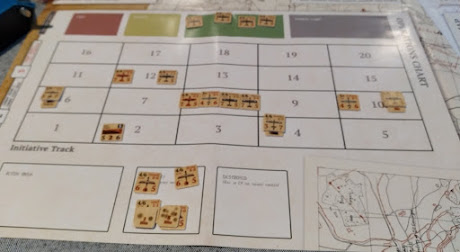There is
such a perception of romance and adventure regarding the fighting that took
place in the skies over Europe in the First World War, it’s easy to
forget that at the outbreak of war, heavier-than-air flight was a technology
still in its infancy; the first successful powered flight had taken place only eleven years before the outbreak of hostilities. While several countries had
been experimenting with arming winged aircraft, they were initially used only
for reconnaissance; the first plane to shoot down by another didn't occur until October of
1914.
War is a
great catalyst for technological advancement: at the beginning of the war,
planes used in the roles of fighters and escorts weighed in the region of half-
to three-quarters of a metric tonne with an air speed that might get near
hundred kilometres per hour; by the end of hostilities, the average was around
two tonnes (4,400 lbs), with a top speed approaching 240 kph (around 150 mph).
Eric Von
Rossing’s Aces of Valor (Legion Wargames, 2023*) is a solitaire game
depicting the air war on the Western Front. In it, the player takes command of
a squadron of fighter pilots and their planes, and undertakes a variety of
missions, while trying to bring the boys home, preferably with their aircraft
still intact. Though clever design choices, Von Rossing manages to convey both
the pace of technological advancement though the course of the war, and retain
some of the romance and heroism of the airmen and the missions on which they
were sent.
Appearance
The map for
Aces of Valor presents the Initiative table for arial combat to the left and
the schematic battlefield to the right, along with tracks for recording Mission
and Victory Points and your campaign progress across the top portion, with a
marked section for the Mission deck and current/previous missions near the
centre of the chart, and useful tables duplicated in the remaining spaces. The
colour palette and fonts are evocative of the early war period, and the whole
map is utilised effectively. It’s a full-sized map (default industry standard
22” by 34”), so it’s a biggish footprint to start with, but nearly everything
has a place on the map, so it doesn’t get too unwieldy. It might have been nice
to have a marked-out place for the optional After-Mission Events cards, but I
managed with them sitting over the title and credits in the top right corner (no
disrespect intended to those involved.

Qualities of
good design carries through to the other components as well. The plane counters
are of a uniform light brown (as are the target markers and most of the other
counters), the nationality represented by the appropriate insignia. Each plane
is personalised by the first name of the pilot (Billy, Manfred, Eddy, etc.),
and duplicated over each generation of planes for that nationality, so you can
upgrade your planes while keeping your pilot roster. The Mission cards are
printed on good stock and feature some very nice artwork, each illustration
tied to the mission in question.
There are four
player’s aid cards of varying sizes, and here again, good design takes precedence.
Each is designed to present their information clearly and with an eye to functionality.
The first two cards are the Campaign and Pre-/Post-Mission PACs. As it may
suggest, the Campaign PAC is designed to help you set the game up with a list
of steps to that end. It also offers options for randomly choosing a nationality
to play and a tier of aircraft to begin with, if you can’t decide for yourself
(choices can be overwhelming). The Campaign PAC is also the only place where
you can find the keys for the aircraft and ground target markers as well as the
map key (these don’t appear in the rule book, which threw me initially, but it actually makes more sense to have it to hand). I found myself referring to this a lot
through the first couple of missions.

The Pre-/Post-Mission
PAC pretty much does what it says on the label. The Pre-Mission section offers
a brief, step-by-step description of how to choose and set up for a mission,
establish the weather (which can affect some missions as well as sighting by
enemy AA), and the ordinance capacity of the planes involved, should bombing be
on the agenda. The Post-Mission section give you the same step-by-step
instruction for establishing the success of the mission in term of Mission
Points (You’ll get a base level of points for the mission, but may get extra
points if you manage to knock out an enemy plane or two, and conversely loose
points for the loss of planes or pilots). These will be recorded on a running
board on the map. This PAC also details the conversion rates for MPs. Mission
Points are the currency of the game; they can be converted to Victory Points,
but they can also be used to repair, replace (in the case of a lost plane), or
even upgrade your flight’s aircraft to a higher tier.

The Flight
Phase PAC is the one you’ll probably be spending the most time with. It’s a
two-panel card, designed to be read opened (thankfully all the PACs for Aces of
Valor are single-sided). Each mission will require your mission task force to
fly to a selected point on the battlefield map and complete the instructed operation
there, and then return once more to your home base. Each time you move your Flight
marker to a new gird section of the battlefield map, you must roll 2d6 to
establish if an event takes place and refer to the Flight Event Check table. If
your roll an event (unlikely behind your own lines, more likely over enemy
territory, of course), you then refer to the Flight Event Outcome. Events range
from a change in the weather or one of your pilots experiencing engine trouble,
through to anti-aircraft fire and possible targets of opportunity, through to
getting bounced by an enemy flight (note: the Flight Event and AA hit tables
are conveniently placed on the map sheet, above the Battlefield Map. A mid-flight
event could see your ranks thinned before you even get to the target, or even
be forced to cancel the mission and return to base. Conversely, you may have a dream
run without a single adverse event. Then, after the mission is completed, you
follow the same process until the flight marker makes it to your home field. The
Flight Phase PAC also has tables for dealing with aircraft that have taken
damage, forced landings and pilot fatality.
With three
panels, the Combat Phase PAC might seem the unruliest of the player’s aids, but
here the thoughtfulness of the design choices shines through once more. The
first (left) panel offers the Procedure for establishing the nationality of the
encountered enemy (if playing the Germans) and determining which side has the
advantage of early detection, then sets out the steps for each combat round
(maximum of three). It also presents the tables necessary to complete these
initial tasks, including placement of your planes, those of your antagonist,
and any ground targets on the Initiative Track.
The centre
panel deals with the actions available to each plane on the Initiative Track in
its turn, Initiative Priority for planes sharing the same initiative space, Air-to-Air
combat, Aircraft Damage and Destroyed Friendly Fighter Check tables will also be
found here.
The third
panel is mainly concerned with Ground Targets (often the subject of your current
Mission). Most of the time you are going to be dealing with either aerial
combat or ground attack/photo recon both played out on the Initiative Track. Sometimes,
however, you may be bounced at the mission location, and must deal with both their
stated mission and enemy fighters trying to hinder said mission. This is where
the clever design the trifold PAC comes into play; the left panel has been
given enough room to (snugly) fit folded behind the third panel, to allow easy access
to the two necessary panels flipping between without having to open the PAC out.
(Some of you may have a big enough paly area to leave all the PACs out and
visible, but with the kind of space constraints I play under, I appreciate the
assist.)
Play
The player
chooses the nationality they wish to play, and randomly select a squadron of
eight early, middle, or late era planes from a pool of sixteen (the pilots, all
historically based, are duplicated across the three eras, and depending on the
length of the campaign (Eight, twelve or sixteen missions), they may have a chance to upgrade to superior planes,
should they survive). The player locates their squadron’s home airfield on the
battlefield map, and after some basic housekeeping, is ready to draw their
first mission. The missions are depicted on cards (54 in all) for which there
are on the map places for the shuffled deck and the current (upturned) mission
card. Missions vary from escorting bombers or arial recon flights to strafing
mobile or static targets like tanks or infantry, to interception of incoming
enemy planes. Occasionally the enemy may even get the jump on you and your
pilots must scramble to get off the ground in enough time to take on an
incoming flight in the air above your airfield.
Generally, a
Mission Card will give you a mission and a location (e.g., scouring the skies
for enemy fighters or escorting bombers or a photo-recon plane over an enemy
target). You will pick the pilots for your mission from the available pool (the
mission will dictate how many planes you can send on the mission, as well as
any auxiliary aircraft), and move them from the Ready box the Current Flight
box (above the Initiative Track).
.jpg)
The action
is abstracted, both for operational movement and tactical fighting, but both
are models of elegance in design. For each mission you have 24 fuel points (maybe
slightly less if your fighters are laden with ordinance). One of these is expended for each section of
the Battlefield Map the flight passes over. With each section, you roll 2d6 to
see if you run foul of an event (events are less likely to occur over friendly
terrain, more likely as you move over No-Man’s-Land and into the enemy rear). Progress
is recorded with a Flight marker, with the prospective target section marked
with a Target marker.
When you
reach the target area – or if you encounter enemy planes on the way – the action
moves to the Initiative Track. Again, a 2d6 is rolled for each plane involved
in the action; the plane’s performance rating, the pilot’s air combat modifier,
and any other modifiers are added to that number, and the total is the numbered
position at which that plane is placed on the Initiative Track. Any ground
targets are placed as per their Initiative Rating (usually low single digits). Once
all the planes and targets are placed on the track, the first combat round
begins. Starting with the numerically highest initiative plane, each plane will
have a chance to fire at the next enemy plane or target on the track. If Pierre
is at position 17 and his buddy Leon is a 15, but the rascally Fritz is at 12, both
French pilots will have a shot at the German, who will in turn have a chance to
shoot at Rene in the ninth position (Rene rolled particularly poorly. Moreover,
the distance between the firing plane and its target will increase the odds of it
taking some damage; Pierre’s position five initiative ranks above Fritz will
give him four dice to roll for damage, whereas Rene will get three dice on the
hapless Fritz. If Fritz survives the onslaught, he will, in turn, get three attack
dice on Rene. If there isn’t anyone lower than Rene on the Initiative track,
Rene misses out. Two-seaters and Bombers can shoot back (there is a little
backward arrow at the tail-end of their silhouettes as a reminder). If the
combat runs through a third round, the flight loses another fuel point and
everyone breaks off.
This
description may come across as a little dry and procedural, but the play builds
a strong narrative, through each successive mission. The Mission Points help to
keep a tally of how the squadron is fairing overall, lending a sense of the
course of the war over a discrete duration, but what you remember is how one of
your rookie pilots was shot up over the enemy rear, but managed to nurse his
plane back behind friendly lines, walk away from the forced landing, and
hitched a ride back to your home airfield, then earned a +1 upgrade to his air
and ground attack skills (a random draw on the post-mission event deck, but
such a perfect fit).
I found Aces of Valor a little clunky at first, but that was on me; about
half-way through the second mission, I realised everything was just happening;
I was plotting moves and making checks, taking Ack-Ack fire and surviving,
chasing away smaller enemy flights and shooting down observation balloons with
rockets. The process was happening, but I was seeing the narrative. This is a
game that will do that if you will let it.
Appraisal
There
is so much to like about Aces of Valor. I found it a truly immersive experience.
It doesn’t give you the seat-of-your-pants experience of something like Interceptor Ace (Compass Games, 2019), but I found myself tracking the progress of the squadron
through a full sixteen missions (a long campaign; I’d only set out to do twelve,
but it was hard to give up), rejoicing in the squadron’s triumphs and mourning their
losses (three pilots in all – quite a low attrition rate, really).
I
think I may have made this all sound easy. Don’t be fooled; while the functions
of the game are simple and quite straight-forward once you get the hang of
them, the missions are anything but. In my first couple of outings, I had some
lucky breaks with the dice, not getting entangled too often in AA fire or
bounced by enemy fighters. On my third or fourth mission – a photo-recon task –
the flight was jumped twice by superior fighters in superior numbers, both attacks
happening before they’d even reached our side’s trench-line. I didn’t lose any
pilots in that instance, but after the second attack, I was already down two planes
and deeming the mission unsafe to continue, turned the remainder of the flight
back to the home airfield. Every mission holds new surprises and challenges.
That’s what makes this game so much fun.
To
my mind, Aces of Valor is a little masterpiece. It achieves what it sets out to
do – creating an immersive and thoroughly satisfying play experience – and does it with minimal fuss and bother. As I’ve mentioned elsewhere, one of
the aspects of this game that I appreciate most of all is the fact that, taking
precautions to record what mission you’re up to and how many Mission- and
Victory-Points you’ve accrued, it’s easy enough to break the game down and box
it, then pull it out again when time permits and set it up without too much fuss
and bother.* The lack of bookkeeping is also a boon. Everything needed is recorded
on the board via tracks. No written records. No clutter. well, no clutter that the game doesn't bring itself (did I mention it has four player's aids?)
I
think it took me about five or six weeks to complete my first campaign of Aces
of Valor. Now I’m done, I want to start another one. I know I won’t be able to
get to it for a week or two, but I’m already looking forward to it. If that’s
not a recommendation for the game, I’m not quite sure what would be.
* At the time of writing, Aces of Valor is still available direct from the publisher, Legion Wargames, at the CPO (prepublication discount) price.
** I keep the completed missions bundled separately, and take a photo of the
points status on my phone, although you could as easily write it down on a
scrap of paper or a Post-It, and pop it in the box for next time.
.jpg)








.jpg)




.jpg)


















.jpg)






.jpg)





.jpg)

.jpg)
.jpg)




